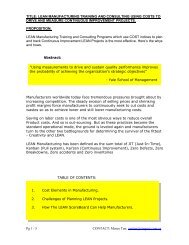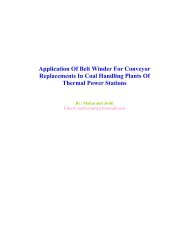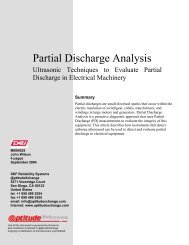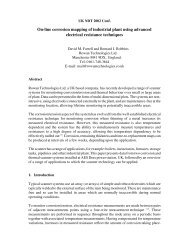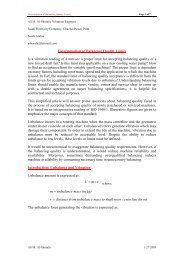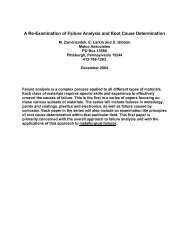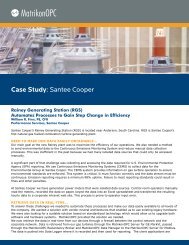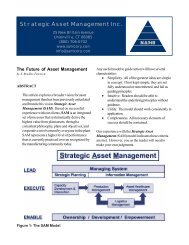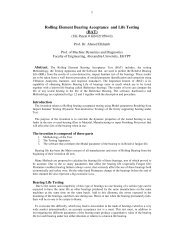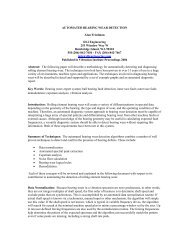Investigating Material and Component Failure - TCR Engineering ...
Investigating Material and Component Failure - TCR Engineering ...
Investigating Material and Component Failure - TCR Engineering ...
You also want an ePaper? Increase the reach of your titles
YUMPU automatically turns print PDFs into web optimized ePapers that Google loves.
Ductile <strong>and</strong> Brittle Metal <strong>Failure</strong>s<br />
Ductile metals experience observable plastic deformation prior to fracture.<br />
Brittle metals experience little or no plastic deformation prior to fracture. At<br />
times metals behave in a transitional manner - partially ductile/brittle.<br />
Ductile fracture is characterized by tearing of metal <strong>and</strong> significant plastic<br />
deformation. The ductile fracture may have a gray, fibrous appearance.<br />
Ductile fractures are associated with overload of the structure or large<br />
discontinuities.<br />
Ductile fracture has dimpled, cup <strong>and</strong> cone fracture appearance. The dimples<br />
can become elongated by a lateral shearing force, or if the crack is in the<br />
opening (tearing) mode.<br />
Brittle fracture is characterized by rapid crack propagation with low energy<br />
release <strong>and</strong> without significant plastic deformation. The fracture may have a<br />
bright granular appearance. The fractures are generally of the flat type <strong>and</strong><br />
chevron patterns may be present.<br />
Brittle fracture displays either cleavage (transgranular) or intergranular<br />
fracture. This depends upon whether the grain boundaries are stronger or<br />
weaker than the grains.<br />
The fracture modes (dimples, cleavage, or intergranular fracture) may be<br />
seen on the fracture surface <strong>and</strong> it is possible all three modes will be present<br />
of a given fracture face.<br />
Hydrogen Embrittlement <strong>Failure</strong>s<br />
When tensile stresses are applied to hydrogen embrittled component it may<br />
fail prematurely. Hydrogen embrittlement failures are frequently unexpected<br />
<strong>and</strong> sometimes catastrophic. An externally applied load is not required as the<br />
tensile stresses may be due to residual stresses in the material. The<br />
threshold stresses to cause cracking are commonly below the yield stress of<br />
the material.<br />
High strength steel, such as quenched <strong>and</strong> tempered steels or precipitation<br />
hardened steels are particularly susceptible to hydrogen embrittlement.<br />
Hydrogen can be introduced into the material in service or during materials<br />
processing.<br />
Tensile stresses, susceptible material, <strong>and</strong> the presence of hydrogen are<br />
necessary to cause hydrogen embrittlement. Residual stresses or externally<br />
applied loads resulting in stresses significantly below yield stresses can cause<br />
cracking. Thus, catastrophic failure can occur without significant deformation<br />
or obvious deterioration of the component.<br />
Very small amounts of hydrogen can cause hydrogen embrittlement in high<br />
strength steels. Common causes of hydrogen embrittlement are pickling,<br />
<strong>Failure</strong> <strong>and</strong> Root Cause Analysis White Paper by <strong>TCR</strong> <strong>Engineering</strong>, India 5



